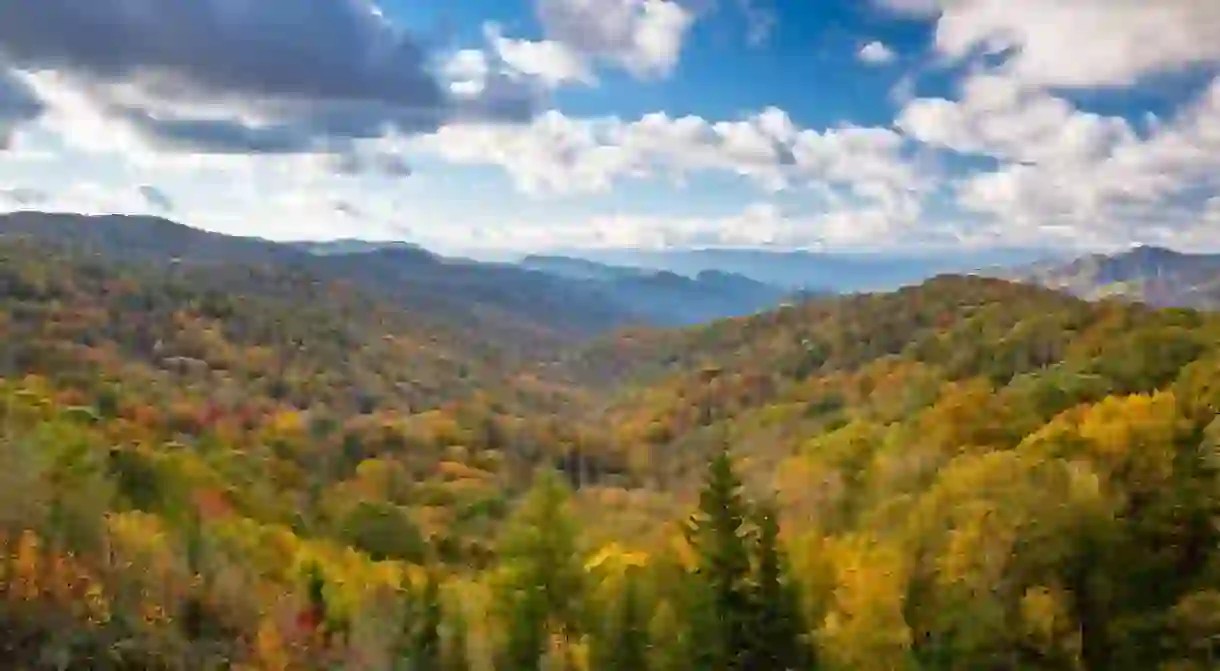The 7 Best Things to See and Do in Great Smoky Mountains National Park

There is so much to explore in the Great Smoky Mountains National Park besides hiking. These are the best things to see and do if you want to make the most of your time in the Smokies.
Cool off by the waterfalls
Park

Tour Sugarlands Distilling Company
Distillery, Park
Circle around Cades Cove
Church, Park
Go horseback riding
Park
Climb Clingmans Dome
Natural Feature

At an elevation of 6,643 feet (2,025 meters), Clingmans Dome is the highest mountain in the Smokies and the highest point in Tennessee. It sits at the top of the Great Smoky Mountains National Park, accessed via Newfound Gap. After taking the access road, there is a half-mile walk to the summit. At the top of the dome is the 45-foot (14-meter) concrete Clingmans Dome Observation Tower, built in 1959, that offers panoramic views up to 100 miles (161 kilometers) away. The observation tower is open year-round; however, the access road leading to it is closed from December 1st through March 31st.
Explore historic buildings in Cataloochee Valley
Natural Feature

Cataloochee Valley was one of the largest and most prosperous settlements in the 1900s. Some 1,200 people lived in the valley, and most made their living by farming. Today, there are many preserved historic buildings, including two churches, a school, and several homes. You can tour these structures using a self-guiding auto tour booklet, and there is more to explore by walking a couple of miles to the 5.2-mile (8.4-kilometer) Little Cataloochee Trail. Visitors can find historical information and exhibits at the Palmer House.
Watch for wildlife
Park
<button class=”btn btn-default flat” style=”box-sizing: border-box; font-family: inherit; font-size: 14px; margin: 0px; vertical-align: middle; line-height: 1.3; text-transform: none; -webkit-appearance: button; cursor: pointer; border: 1px solid #ededed; display: inline-block; font-weight: normal; text-align: center; background-image: none; white-space: nowrap; padding: 10px 15px; border-radius: 0px; user-select: none; color: #393939; background-color: white; transition-property: background-color; transition-duration: 0.2s; -webkit-tap-highlight-color: transparent; box-shadow: none; position: absolute; right: 0px; bottom: 0px;” data-ng-show=”showButton” data-ng-class=”dialogButtonClass” data-ng-click=”openDialog()” data-dialog=”” data-title=”Southeast Travel Conditions” data-dialog-button-class=”btn-default flat” data-dialog-button=” Enlarge”> Enlarge













